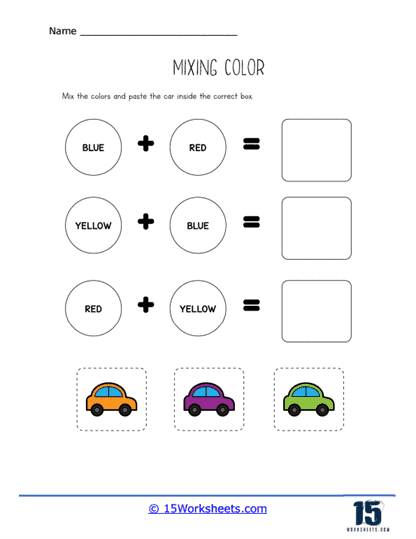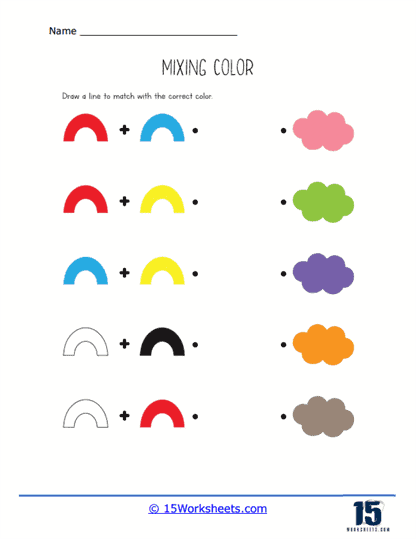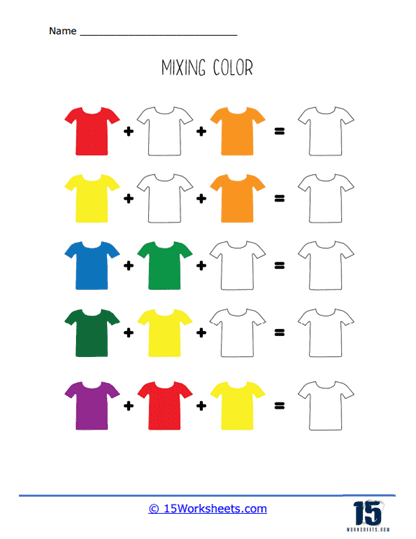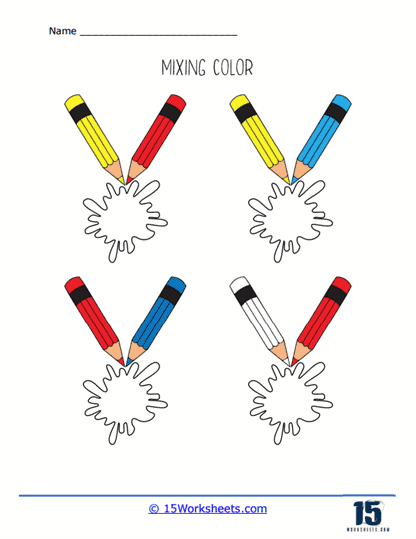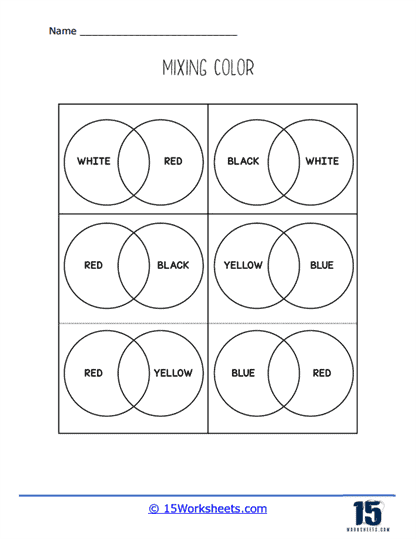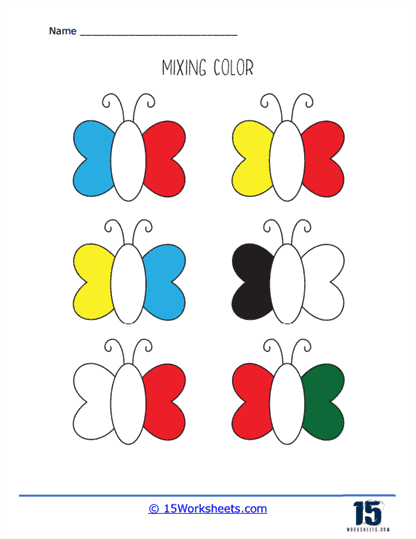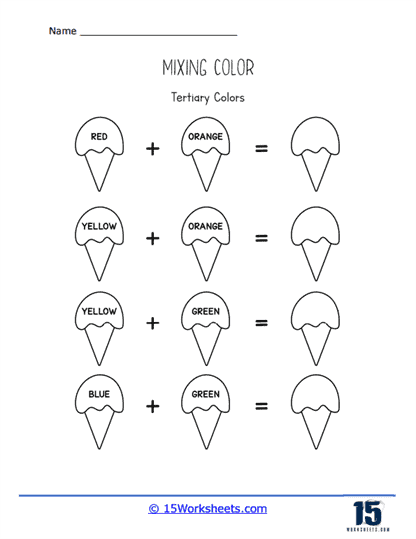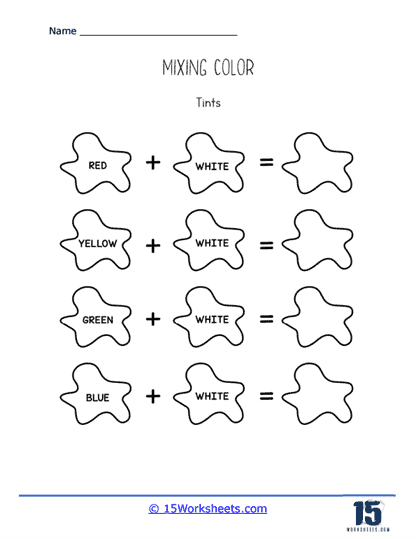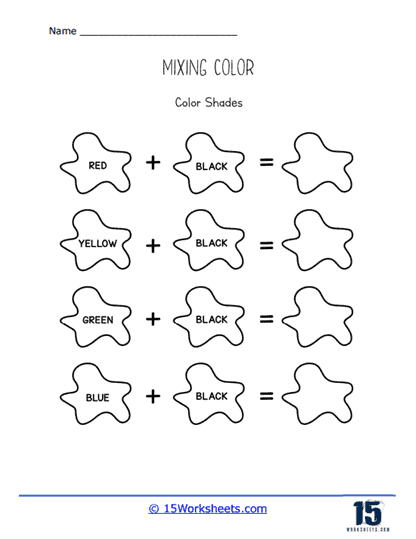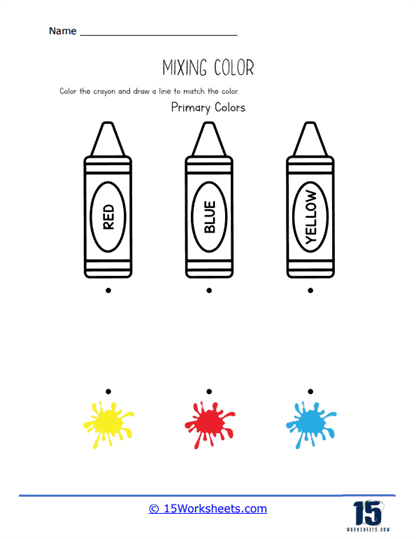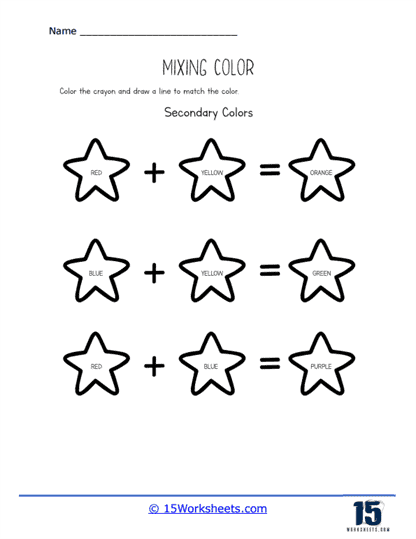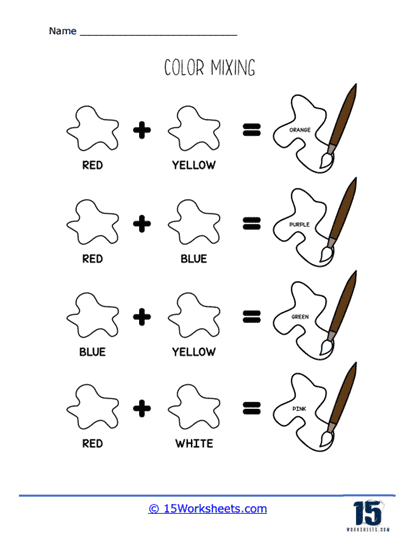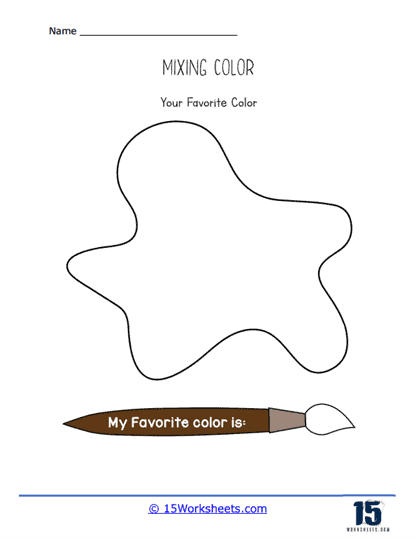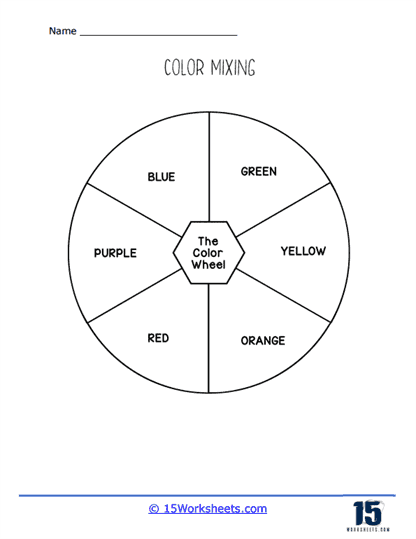Mixing Colors Worksheets
All About These 15 Worksheets
Young learners embark on a captivating adventure of color exploration with this comprehensive collection of Kindergarten worksheets focused on mixing colors. This series is designed to introduce them to the magic of color blending, promoting creativity, critical thinking, and scientific inquiry.
Through a variety of interactive exercises, students will engage in hands-on color mixing activities, learn about primary and secondary colors, and discover the fascinating world of color combinations. These worksheets also provide opportunities for students to experiment, observe, and develop a deep understanding of color theory while having fun and unleashing their inner artists. Through these worksheets, students will:
- Engage in activities that involve mixing specific colors using primary colors as a guide, promoting critical thinking and problem-solving skills;
- Experiment with different color combinations, showcasing their findings through a variety coloring activities;
- And fill in a color wheel, reinforcing the basics of color theory and how color combinations work.
Through this engaging series of Mixing Colors worksheets, young learners will embark on an exciting journey of artistic discovery. By participating in a variety of activities that involve color mixing basics, students will develop a deep understanding of color theory, foster creativity, and enhance critical thinking skills.
By engaging with these exercises, students will develop a love for experimentation, strengthen their fine motor skills, and cultivate a lifelong appreciation for the limitless possibilities of color. Ultimately, this collection serves as a stepping stone for future artistic endeavors, scientific inquiry, and a profound understanding of the world of colors.
How to Teach Students About Mixing Colors
Teaching students about mixing colors can be a fun and engaging process that helps them understand color theory and explore their creativity. Use hands-on activities and resources to help them grasp the concept of creating new colors by mixing primary colors. Here are some suggestions:
Introduce the Concepts of Primary and Secondary Colors
Begin by explaining the basics of primary colors (red, yellow, and blue) and secondary colors (green, orange, and purple). Teach students that secondary colors are created by mixing primary colors.
Do a Demo
Show students how to mix primary colors to create secondary colors using paints, food coloring, or colored water. For instance, mix red and yellow to create orange, blue and yellow to create green, and red and blue to create purple.
Get Hands-on
Provide students with various materials to experiment with color mixing, such as watercolors, tempera paints, or colored pencils. Encourage them to mix primary colors to create secondary colors and observe the results. Create worksheets with color mixing exercises, such as color wheel templates or charts where students can fill in the secondary colors by mixing primary colors. Better yet, use the worksheets that we have created for you above.
Teach students how to create tints and shades by mixing colors with white or black. This helps them understand the concept of lightening or darkening a color to create various hues.
Use Interactive Games
Develop games or activities that involve color mixing, such as color mixing bingo or memory matching, where students must identify the primary colors used to create a secondary color.
Playdough or Slime Time
Provide students with red, yellow, and blue playdough or slime, and encourage them to mix the colors to create secondary colors. This tactile activity can be especially helpful for younger students or those who learn best through hands-on experiences. Incorporate color mixing into art projects, like painting, collage-making, or sculpture. Encourage students to use their newly acquired knowledge of color mixing to create unique and expressive artwork.
Digital Tools
Introduce students to digital tools or apps that allow them to mix colors and create custom palettes, such as Adobe Color or various painting apps. Continually reinforce color mixing concepts through classroom discussions, art projects, and hands-on activities. Encourage students to observe color mixing in their daily lives and share their observations with the class.
By incorporating various activities and resources, you can create an enjoyable and effective learning experience that helps students understand color mixing and its applications in art, design, and everyday life. Be patient and supportive, and remember that each student learns at their own pace.

